Take your mature Alocasia Polly out of its pot and separate it into sections, splitting the roots between them evenly. Then, you can place the pieces in water or potting mix. From there, it should grow normally.
Propagate Alocasia Polly is more straightforward than doing the same to many other plants!
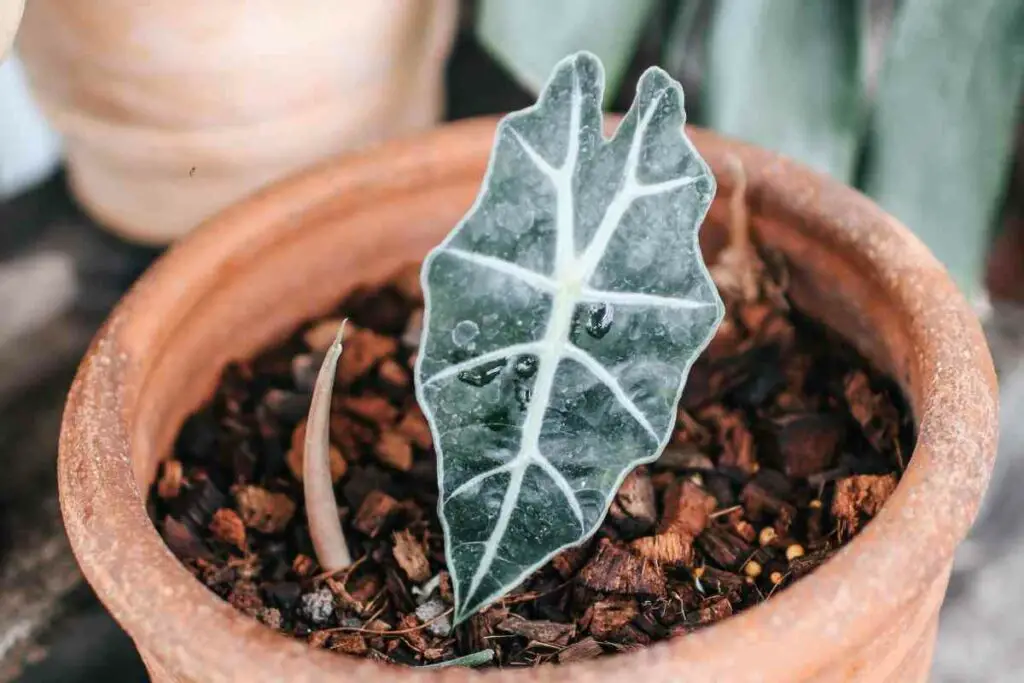
However, that doesn’t mean it doesn’t come with its challenges.
You’ll want to know as much about the process as possible before trying it on your plants.
Table of Contents
How Do I Propagate an Alocasia Polly?
Before you begin the propagation process, you’ll need to make sure you have very sharp shears, an extra pot, and fresh soil.
If you’re doing this inside, it’s also a good idea to set down a sheet of paper to avoid a mess.
You can follow the below steps to propagate through division when you’re ready!
Remove the Plant From Its Pot
First, you’ll need to take the plant out of its planter.
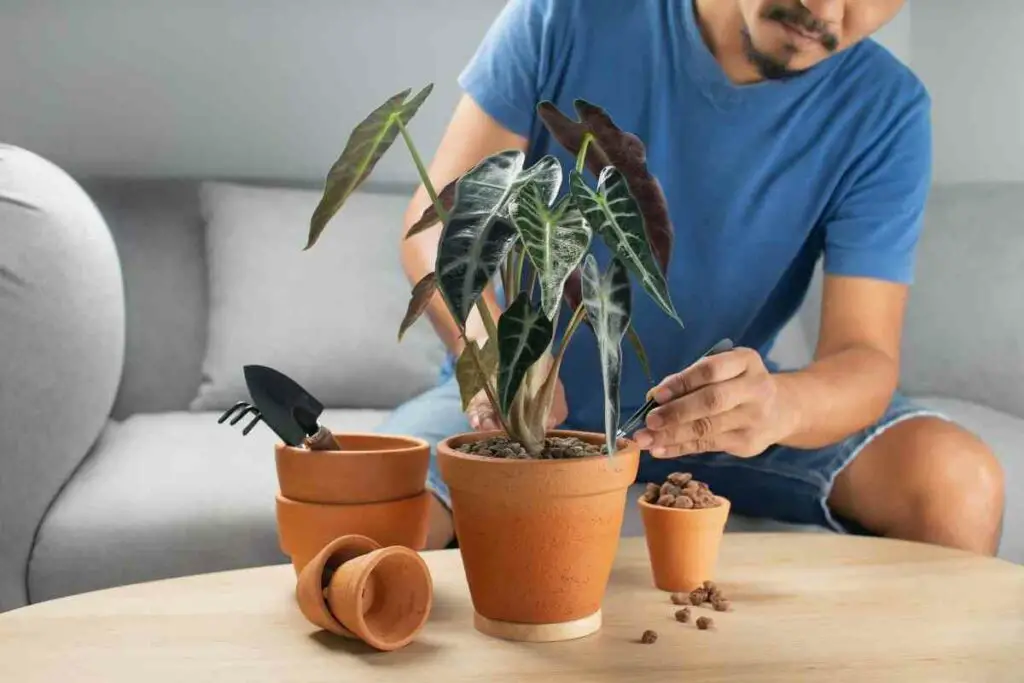
You’ll notice natural branching occurring; grab the plant by its firmest offshoots while you remove it. It would be best if you did it slowly not to harm it.
Once you have the plant out, you’ll need to clean the soil off the roots.
Start by separating the roots with your hands, then brush off as much soil as possible.
The roots only need to be clean enough for you to see what they look like.
Find Offshoots and Separate Them
The offshoots on your Alocasia Polly should be obvious.
They will be completely separate from the other sections- keep an eye out for offshoots as you detangle the roots.
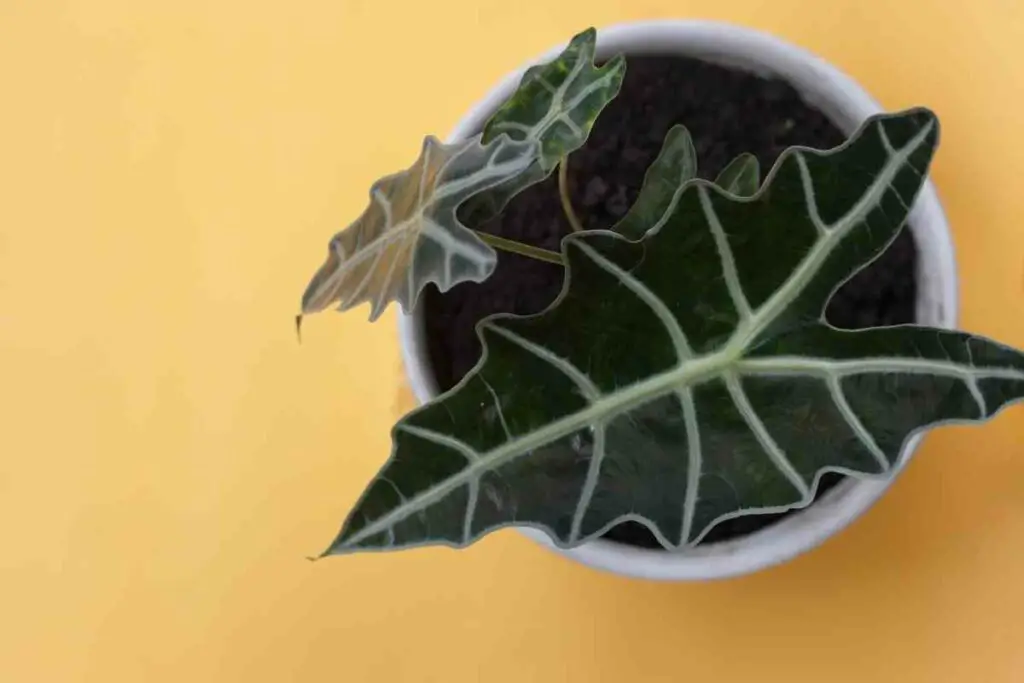
You may need to cut small sections of the roots with your scissors to separate them.
Once you’ve found an offshoot, you need to separate the roots and cut the plant, so each section has some.
Both sides should have strong roots to encourage growth.
Replant or Use Water
Next, you can replant the Alocasia Polly back in its pot or propagate it using water.
You’ll want to grow it in water first if the roots are still immature.
You should propagate in water if the roots look weak or thin. Keeping them in water helps them grow strong enough to thrive in the soil in a few weeks.
Make sure you change the propagation water every two or three days. If you don’t, it could quickly grow bacteria!
If the roots are ready to go back in the soil, use fresh potting soil with plenty of nutrients!
You can add your compost or fertilizer to make sure it gets enough nutrition to form new, stronger roots.
Overall – You’ll want to make sure the plant develops more roots before trying to plant it. You might need to use water before adding it back into fresh soil.
Care For the Plant Like Normal
Lastly, once the plant is back in the soil, you’ll want to resume its regular care routine.
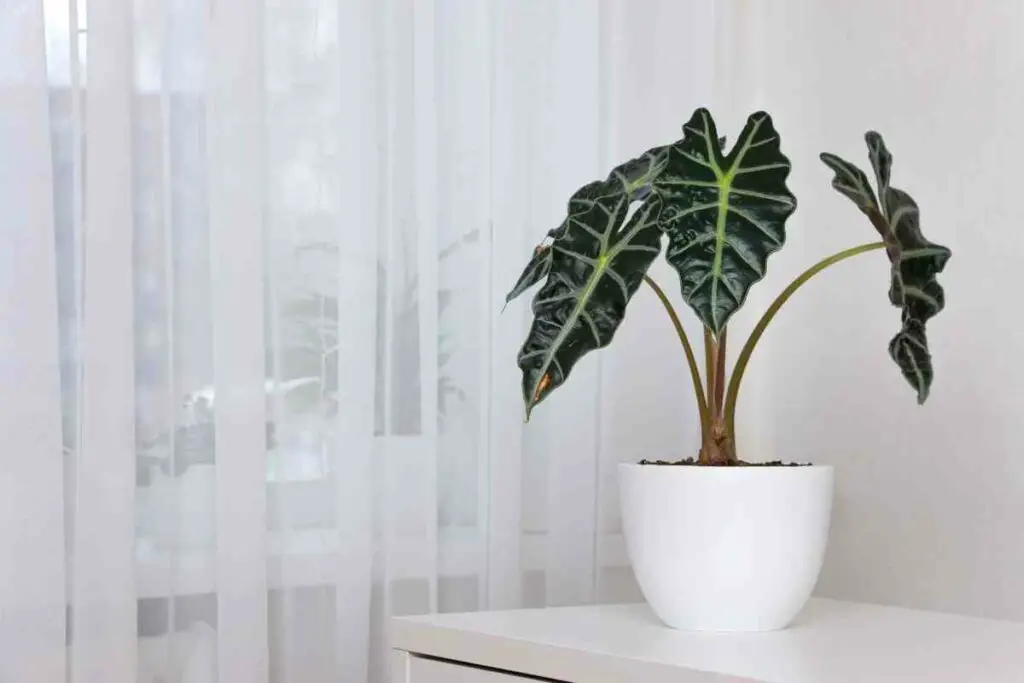
The plant shouldn’t be in direct sunlight and requires more water for a few weeks after replanting.
After that, you want to keep the soil moist, not soaked. The plant only needs watering once per week, with frequent misting.
You’ll want to let the planting soil dry out even more during the winter.
Overall, propagating an Alocasia Polly plant isn’t difficult!
From Experience: You’ll want to make sure you separate and divide the plant properly. Then, ensure the roots are strong enough to handle living in the soil before replanting it.
When Can I Propagate an Alocasia Polly?
You can propagate a mature plant at any time.
You should wait for it to grow in an adult plant first. The roots might not be strong enough to endure the process if you don’t.
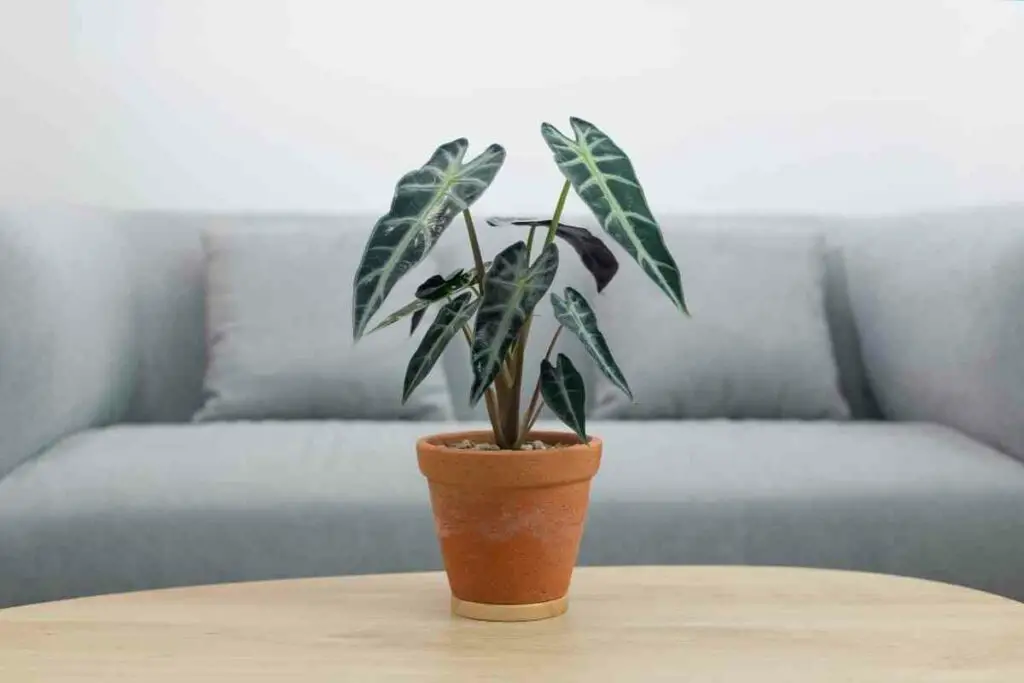
It’s also a good idea to propagate this plant during the spring season.
You want your plant to have plenty of sun as it recovers. Doing so in the winter will lead to slower growth and an increased chance of root rot.
In short, you can propagate your mature Alocasia Polly any time during the spring! You can do so in the summer too with great results.
How Many Divisions Can I Make?
You’ll only want to divide the mother plant a few times.
The exact amount depends on how mature the plant is. You want each section to have a strong, reliable root system.
Otherwise, they won’t grow!
If your plant doesn’t have many strong roots, you can always repot it and wait to propagate it.
That way, you won’t have to worry about harming it.
What is Rhizome Division in Plants?
You’ll want to know what rhizomes are to determine how many times you can divide the plant.
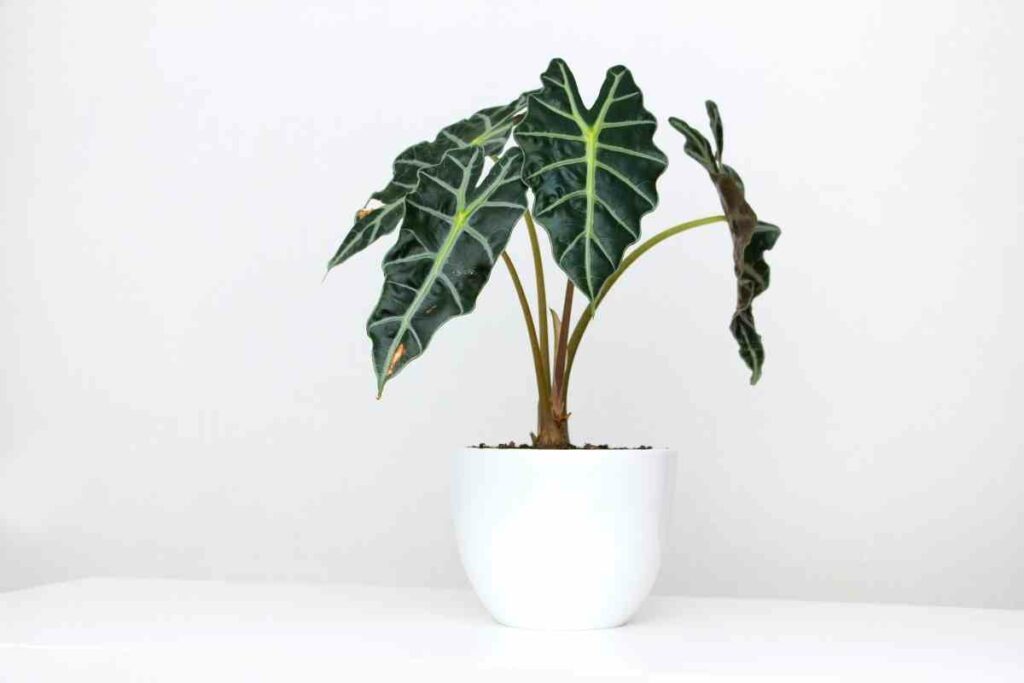
Rhizomes are thick stems that grow just under the soil. When you take the Alocasia Polly out of the pot to detangle the roots, you should notice several parts.
You’ll want to divide the plant in those spots, as long as it has a root system there.
It would help if you also didn’t try to separate the rhizomes- consider each its own section.
Keep In Mind – More mature plants tend to have more rhizomes than immature ones. If you have a very mature plant, you could potentially get several divisions!
Once you’ve taken the rhizomes from the main plant, they should grow new roots. Then, you can replant it!
Why Isn’t My New Alocasia Polly Growing New Roots?
If you’ve recently divided your Alocasia Polly, it takes time to recover.
They may not adjust well to the propagation at first. They can even wilt if you don’t give them additional care!
However, as long as you stick with a consistent care routine, you’ll notice the plant bounce back and start growing new roots in no time.
If it’s cold outside, you’ll want to make sure the Alocasia Polly gets ample sun and warmth during its recovery time.
In short, it’s normal for plants to experience shock immediately after division.
You’ll need to care for the plant like usual and have patience. Eventually, it will start to grow new roots!
Final Thoughts
Propagate Alocasia Polly is more straightforward than doing the same to many other plants!
Before you begin the propagation process, you’ll need to make sure you have very sharp shears, an extra pot, and fresh soil.
Start by Remove the Plant From Its Pot, then Find Offshoots and Separate Them, Replant or Use Water, finally Care For the Plant Like Normal.
Also Helpful
- How to Dry Basil Leaves: A Professional Guide
- Is an Avocado a Fruit or Vegetable? Simple Answer and Explanation
- Does Pineapple Have Seeds? Exploring the Anatomy of Pineapples
- Blooming Through Winter: Can I Grow Vegetables Indoors in the Winter?
- What Can You Grow in a Greenhouse All Year Round: A Guide to Year-Round Greenhouse Gardening
- Are Blueberries Blue? Debunking the Myth of Their Color
















